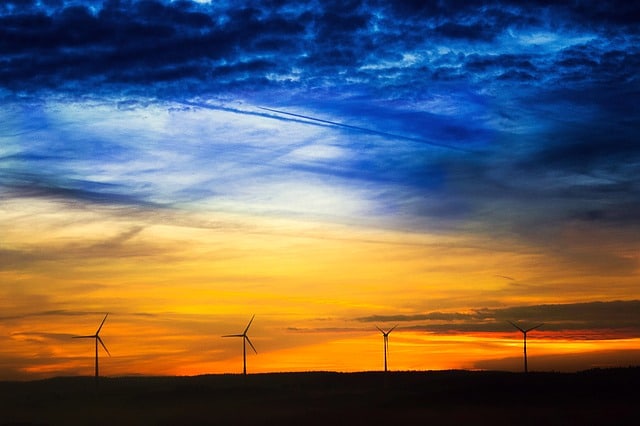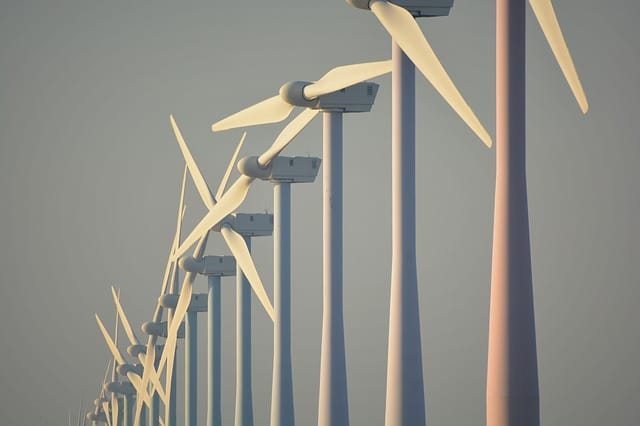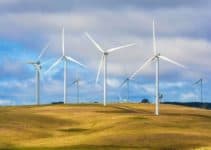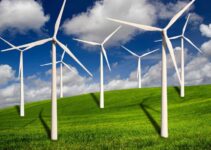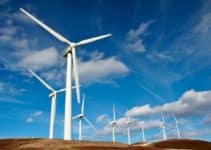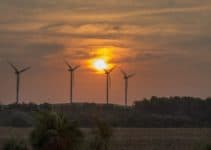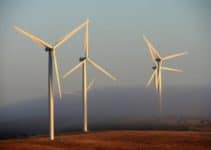People have been tapping the power of wind for thousands of years to power windmills and drive sailboats. Without the power of wind, there would be no history of great explorers like Christopher Columbus, Vasco Nunez de Balboa, and John Cabot who voyaged across oceans and seas to explore the wonders of the world. Also, our ancestors would have struggled to travel across seas and oceans to trade with other nations.
Excessive heating of earth due to the burning of fossil fuels has forced people across the globe to generate power through wind. The wind is another form of solar energy and is caused by uneven heating of the atmosphere by the sun, the irregularities of the earth’s surface, and the rotation of the earth. Wind energy doesn’t generate any toxic emissions like fossil fuels and provides a clean source of power. Like any other source of power generation, wind energy has its own set of advantages and disadvantages.
Before we get to understand what wind energy is, it would be helpful to know how winds are formed.
How Winds are Formed?
The wind is formed by large convectional currents in the earth’s atmosphere, powered by the sun’s heat energy. This basically implies that as long as the sun is shining, the wind will be available.
The earth’s surface contains both water and land. When the sun shines, the air occurring over the surface of the land heats up pretty quick than that occurring over water. The heated air is relatively lighter, and so it begins to rise.
On the other hand, the cooler air is denser, and so it falls and takes the place of the air occurring over the land. When night falls, the exact opposite happens. Air occurring over the water is warmer, and so it rises, and its place is taken over by the cooler air coming from land. This series of moving air is known as wind and harbors vast amounts of kinetic energy.
So, wind energy is energy derived from the motion of the wind. Essentially, the speed of the wind, which is full of kinetic energy, is harvested and converted into mechanical energy to be used to turn windmills. The energy can also be converted into electricity. How? By installing turbines in their paths. The speeding winds will turn the turbine, which is tethered to a generator. The turning turbine will spark the generator to produce electricity.
Learn about 35 facts about wind energy.
Various Advantages of Wind Energy
The potential for wind energy is enormous. In fact, scientists say that wind power is capable of supplying over 20% of world electricity if the necessary technologies are in place. The advantages and disadvantages of wind energy are in-depth.
However, the advantages far outweigh the disadvantages, which is why it’s rapidly being developed to provide a clean source of energy. That said, here are the advantages accrued from embracing wind energy.
1. Wind energy is a renewable energy source
By definition, renewable energy is energy generated from natural resources and is naturally replenished. The wind is a natural resource because it’s constantly replenished by the sun. This means that as long as the sun is available, winds will always blow.
Scientists project that the sun will continue to shine for the next 6-7 billion years, which is a bright prospect for wind energy investors. Renewable energy is sometimes known as clean energy or green energy because it doesn’t emit greenhouse gasses to the atmosphere and doesn’t pollute water resources.
Fossil fuels (coal, oil, natural), on the other hand, are nonrenewable sources of energy because they are projected to deplete in the next 50 years or so. On top of that, they cause a whole lot of pollution by emitting a wide array of greenhouse gasses.
2. Wind power is eco-friendly
Wind energy is classified as a green source of energy since its production does not involve the emission of dangerous fumes like fossil fuels. Although the manufacturing, transportation, and installation of wind turbines contribute to global warming gradually, the generation of electricity itself doesn’t contribute to the emission of greenhouse gasses in any way. This makes it a perfect energy source for the environment and humans.
3. Has low operational costs
It’s perfectly true that the initial installation of wind power technologies requires a high capital outlay, more so installing a commercial wind turbine. It all boils down to the number of turbines to be installed, the date the turbine purchase agreement was activated, the cost of financing, the location of the turbine installation project, construction contracts, and much more.
However, once these systems are up and running, the operational costs will significantly come down. Only routine maintenance will be required to ensure the turbines are operating seamlessly.
4. Wind power helps minimize overdependence on traditional sources of electricity
Over the years, households have entirely depended on traditional forms of electricity powered by fossil fuels. Investments in wind energy have helped bridge the power gap and helped dialed back on the use of fossil fuels, which emit dangerous greenhouse gasses and cause global warming.
It could be an answer to the ever-increasing demand for petroleum and gas products and would help us to reduce our reliance on fossil fuels from other countries. Apart from this, it can also help to curb harmful greenhouse gas emissions which are the major source of global warming.
5. Doesn’t take up much land
Generally, wind energy is space-efficient. The largest wind turbines capable of catering to the electricity needs of about 600 homes can be situated close together and the land in-between utilized for agricultural purposes. This is the real reason numerous farms stand to benefit a great deal from the installation of wind turbines rather than solar panels.
Landowners can look for additional cash by installing wind turbines on land that can even be used for agricultural purposes. The electricity generated by wind power can be used for your own purpose which will reduce your monthly electricity bill and the surplus power can be sent back to the local grid which will result in more savings.
Moreover, you can check if your state government offers interest-free loans or incentives on the installation of wind turbines that will reduce the extra burden of initial investment on you.
6. Wind energy has seen exponential growth
Although wind energy attributes to 2.5% of entire global electricity production, the capacity is developing at a remarkable rate of 25% each year since 2010. Apart from this exponential growth rate lowering the potential of global warming, it helps bring down the cost of electricity. Since the 1980s, the prices of electricity have significantly gone down, thanks to the development of wind energy systems.
7. Incredible domestic potential
Individuals are able to generate their own electricity by harnessing the wind power the same way people use solar panels to generate their own energy. Most countries even allow their citizens to sell their own electricity to electricity companies.
Residential wind turbines can also help bring down your household energy bills. Perhaps the most attractive benefit of wind energy is protecting you from blackouts and fluctuating energy costs.
8. Wind power has massive potential
The potential for wind energy is totally incredible. Multiple research studies have converged to this conclusion. The global potential of wind energy is more than 400 TW (terawatts). This is because the wind is almost everywhere and can be harvested anywhere. The only stumbling block will be your financial capability to harness it.
9. Installation of wind turbines revitalizes rural economies
Since wind turbines are mostly installed in rural areas, the nearby towns get electricity, and economic activities spring up including small and large businesses. Small industries may also come up, thereby diversifying rural economies, and increasing the government’s tax base.
10.Creates green jobs
Wind energy development projects bring about new short-term and long-term green jobs. Related jobs include meteorologists, structural engineers, surveyors, technicians, bankers, and assembly workers. Statistically, wind energy brings about more jobs than coal plants and 66% more employment opportunities than nuclear power plants per unit of energy produced.
11. Modern wind turbines
Today’s wind turbines are classy, attractive, and modern looking. They don’t look like old plain clunky windmills that become an eyesore on your land. Wind turbines are available in various sizes and a vast range of people can use it for their own use or sell power to the local grid to reap some profits.
The development of wind energy has greatly reduced the over-exploitation of minerals such as oil and coal. Destructive mining has since gone down. Also, some fuels like oil need to be transported to the refinery, and this is very dangerous since they are highly flammable. Wind energy development has reduced the rate of oil transportation over long distances.
For the sake of our planet, resource preservation, rural economic uplift, and national security, everyone must get on board to boost a sustainable renewable energy economy. Wind energy offers the greatest possibilities for sustainable energy future since it’s relatively cheap, creates green jobs, offers substantial and fairly distributed revenue, and it’s easy on Mother Nature since it doesn’t cause any pollution, doesn’t produce any waste and doesn’t exhaust natural resources. Using wind energy to the full today will lay the cornerstone for a healthy future.
